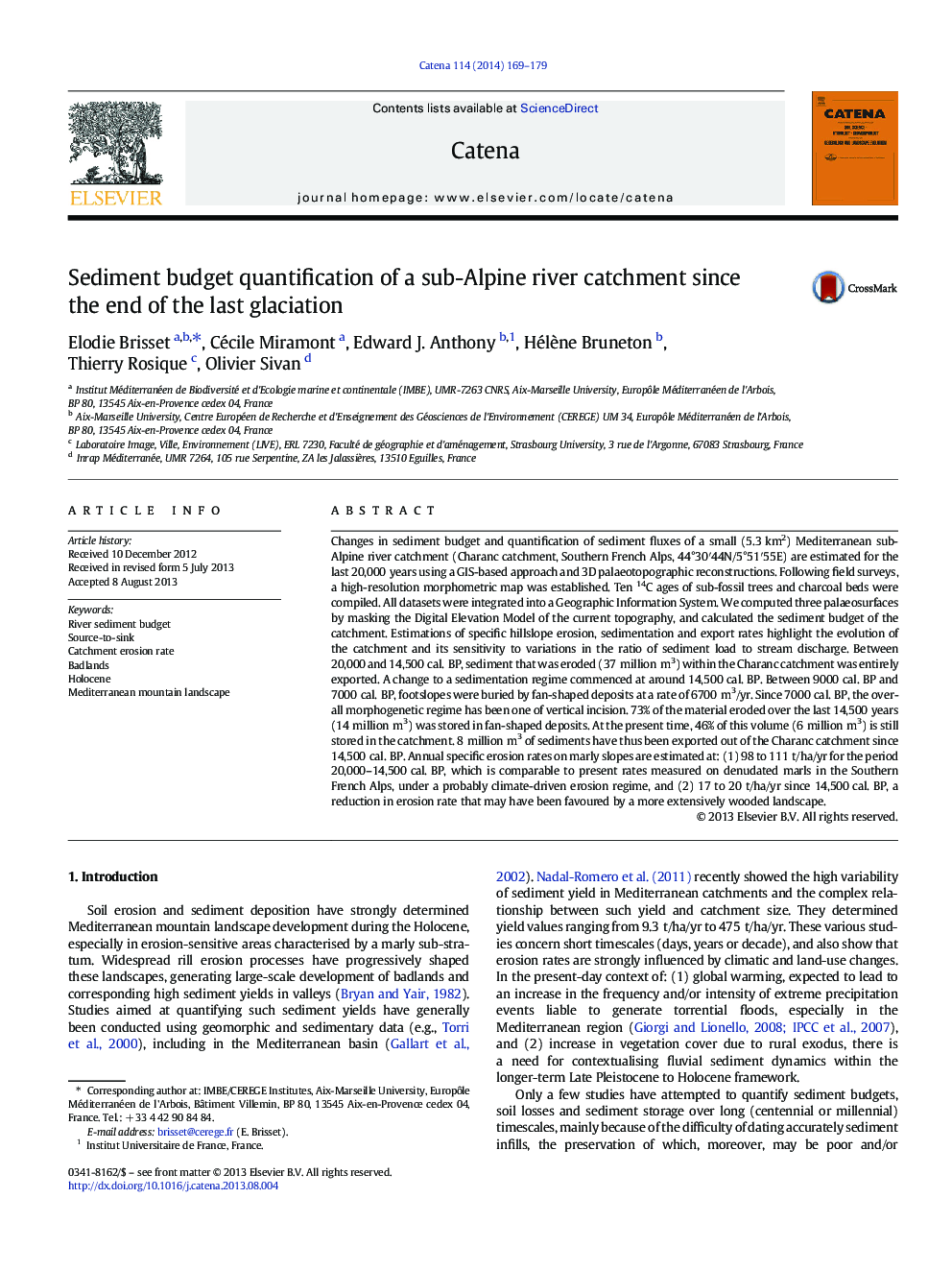| Article ID | Journal | Published Year | Pages | File Type |
|---|---|---|---|---|
| 4571502 | CATENA | 2014 | 11 Pages |
•3D palaeotopographic reconstructions give information about Holocene sediment budget.•Computed specific erosion rate is maximum from 20,000 to 14,500 cal. BP.•The sediment budget shows a change to a sedimentation regime at 14,500 cal. BP.•Changes in erosion regime are probably climate-driven.
Changes in sediment budget and quantification of sediment fluxes of a small (5.3 km2) Mediterranean sub-Alpine river catchment (Charanc catchment, Southern French Alps, 44°30′44N/5°51′55E) are estimated for the last 20,000 years using a GIS-based approach and 3D palaeotopographic reconstructions. Following field surveys, a high-resolution morphometric map was established. Ten 14C ages of sub-fossil trees and charcoal beds were compiled. All datasets were integrated into a Geographic Information System. We computed three palaeosurfaces by masking the Digital Elevation Model of the current topography, and calculated the sediment budget of the catchment. Estimations of specific hillslope erosion, sedimentation and export rates highlight the evolution of the catchment and its sensitivity to variations in the ratio of sediment load to stream discharge. Between 20,000 and 14,500 cal. BP, sediment that was eroded (37 million m3) within the Charanc catchment was entirely exported. A change to a sedimentation regime commenced at around 14,500 cal. BP. Between 9000 cal. BP and 7000 cal. BP, footslopes were buried by fan-shaped deposits at a rate of 6700 m3/yr. Since 7000 cal. BP, the overall morphogenetic regime has been one of vertical incision. 73% of the material eroded over the last 14,500 years (14 million m3) was stored in fan-shaped deposits. At the present time, 46% of this volume (6 million m3) is still stored in the catchment. 8 million m3 of sediments have thus been exported out of the Charanc catchment since 14,500 cal. BP. Annual specific erosion rates on marly slopes are estimated at: (1) 98 to 111 t/ha/yr for the period 20,000–14,500 cal. BP, which is comparable to present rates measured on denudated marls in the Southern French Alps, under a probably climate-driven erosion regime, and (2) 17 to 20 t/ha/yr since 14,500 cal. BP, a reduction in erosion rate that may have been favoured by a more extensively wooded landscape.
